The Guardian’s Michael Hann writes about first gigs. His was pre-hairspray Whitesnake, in the days where every member of the band played extended solos including the bassist. Though somehow I doubt that each solo was realy ren minutes long, even if they might have seemed that long to the 13-year old Michael Hann.
What my first gig actually was depends on what you count as a gig. Was it new-wave one-hit-wonders The Jags, who played a student gig at Bridges Hall?
I can’t remember now if it was a student-only thing or whether tickets were available to the general public. What I do remember is they were truly awful, a drunken shambles who stumbled their way through a barely-recognisable version of their one hit and a dozen other numbers that sounded exactly the same. The guitarist was so blotto he didn’t even notice he’d broken two strings. It’s not surprising they faded away soon after.
Or was it the 1980 Reading Festival, then as now a teenage right-of-passage?
The headliners that year were Rory Gallagher, UFO and Whitesnake, and the bill also included Gillan, Iron Maiden, Def Leppard, Slade, and many, many New Wave of British Heavy Metal bands (You name them, they were probably on the bill). I remember the huge cheer when Ian Gillan came on stage for his special guest spot on Friday night, and the whole field full of people singing along to Smoke on the Water. Then there was Iron Maiden on Saturday, again in the special guest spot. It was right at the beginning of their career, still with original singer Paul DiAnno. They’d just released their début album, and the energy on stage made it clear they were hungry and going places. Then there was Slade, late substitutes for Ozzy Osborne who’d pulled out at short notice. Nobody expected much from them at the start, and a low-key beginning with a couple of new songs gathered polite applause, but little more. Then they started playing the hits, one after another, and everything changed. By the end they’d completely stolen the show. When they came back for an encore, the crowd wanted that Christmas song. “Ye daft buggers”, said Noddy, “You’ll have to sing that yourselves”. So we did. Then they left us with “Born to be Wild”. Def Leppard found that very hard to follow.
Or the first “regular gig” in an indoor venue? That would have been Hawkwind at the now-demolished Top Rank Club in Reading.
The support was power-trio Vardis who sounded like a 30 second excerpt of Love Sculpture’s “Sabre Dance” repeated in a loop for 40 minutes with occasional vocals. As for Hawkwind themselves, this was one of the more metal incarnations of the band, with the late Huw Lloyd Langton on lead guitar and Dave Brock sticking to rhythm. They also had, of all people, Ginger Baker on drums, a legendary musician but quite the wrong sort of drummer for a band like Hawkwind. In retrospect it was probably not the greatest gig ever, soon eclipsed by far better gigs by Gillan, Budgie, Iron Maiden, UFO and Thin Lizzy. If anything, Hawkwind were actually better when I saw them thirty years later at St David’s Hall in Cardiff, but the superior acoustics of a symphony hall probably helped.
So, what was your first gig? Was it somebody legendary, or someone as awful as The Jags?
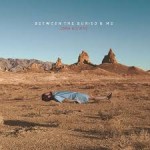 A quite remarkable record that sounds like all the best bits of contemporary metal and progressive rock from the last decade put into a blender. It’s hugely varied with musical references all over the place, yet it still hangs together as a coherent whole. There is an awful lot happening on this record, and it does take a few listens to take it all in. Songs take off in unpredictable directions, and there is more than one number that feels as though it contains a whole concept album’s worth of music in seven or eight minutes.
A quite remarkable record that sounds like all the best bits of contemporary metal and progressive rock from the last decade put into a blender. It’s hugely varied with musical references all over the place, yet it still hangs together as a coherent whole. There is an awful lot happening on this record, and it does take a few listens to take it all in. Songs take off in unpredictable directions, and there is more than one number that feels as though it contains a whole concept album’s worth of music in seven or eight minutes.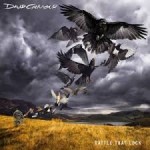 This highly polished singer-songwriter album is perhaps more satisfying that Pink Floyd’s coda “The Endless River”. Though it does tend towards the middle of the road in places, Gilmour’s immediately recognisable lead guitar lights up every song and sets this record apart. While it doesn’t reach the epic grandeur of Pink Floyd’s heyday. it’s still as much about the gorgeous orchestrated arrangements as it is about the songs.
This highly polished singer-songwriter album is perhaps more satisfying that Pink Floyd’s coda “The Endless River”. Though it does tend towards the middle of the road in places, Gilmour’s immediately recognisable lead guitar lights up every song and sets this record apart. While it doesn’t reach the epic grandeur of Pink Floyd’s heyday. it’s still as much about the gorgeous orchestrated arrangements as it is about the songs.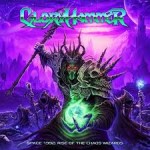 Dundee’s finest power-metallers return with the follow-up to “Tales from the Kingdom of Fife” in which the hero Angus McFife takes the battle with the evil sorcerer Zargothrax to outer space, where he encounters The Goblin King of the Darkthrone Galaxy, and with the aid of the legendary Astral Hammer and The Hollywood Hootsman defeats the sorcerer in epic battle. Unfortunately Earth and all its inhabitants were destroyed in the process, but nobody noticed because Chaos Magic. But that’s power metal for you…
Dundee’s finest power-metallers return with the follow-up to “Tales from the Kingdom of Fife” in which the hero Angus McFife takes the battle with the evil sorcerer Zargothrax to outer space, where he encounters The Goblin King of the Darkthrone Galaxy, and with the aid of the legendary Astral Hammer and The Hollywood Hootsman defeats the sorcerer in epic battle. Unfortunately Earth and all its inhabitants were destroyed in the process, but nobody noticed because Chaos Magic. But that’s power metal for you…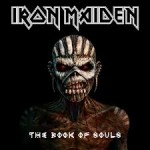 The metal veterans and British institution continue a strong recent run of albums with one of the most ambitious things they’ve ever done, a double album that might just be their best record they’ve made since their 1980s heyday. They’ve managed a double album without filler, covering all bases from galloping rockers to ambitious epics. It culminates with “Empire of the Clouds”, an eighteen-minute tour-de-force which combines Bruce Dickenson’s loves of history and aviation, telling the story of the ill-fated maiden voyage of the R101 airship.
The metal veterans and British institution continue a strong recent run of albums with one of the most ambitious things they’ve ever done, a double album that might just be their best record they’ve made since their 1980s heyday. They’ve managed a double album without filler, covering all bases from galloping rockers to ambitious epics. It culminates with “Empire of the Clouds”, an eighteen-minute tour-de-force which combines Bruce Dickenson’s loves of history and aviation, telling the story of the ill-fated maiden voyage of the R101 airship. Lemmy’s increasingly frail health means Motörhead aren’t the live force they once were, but in the studio it’s another matter. Lemmy has still got it, and accompanied by Mikky Dee and the underrated Phil Campbell, they rock like a bastard, with songs that barrel along like a runaway train. On record at least, with what might prove to be their final album, Motorhead are still the epitome of the primal spirit of Rock’n'Roll, Britain’s equivalent to The Ramones.
Lemmy’s increasingly frail health means Motörhead aren’t the live force they once were, but in the studio it’s another matter. Lemmy has still got it, and accompanied by Mikky Dee and the underrated Phil Campbell, they rock like a bastard, with songs that barrel along like a runaway train. On record at least, with what might prove to be their final album, Motorhead are still the epitome of the primal spirit of Rock’n'Roll, Britain’s equivalent to The Ramones.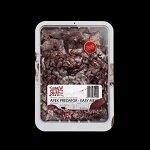 Napalm Death are very angry. It’s hard to make out the words, so it’s not always obvious exactly what they’re angry about, but they’re very, very angry. They combine the visceral fury of punk with the precision of metal, to produce an album that tears out of the speakers and nails you to the wall. Napalm Death show absolutely no signs of mellowing in their old age, and they’ve made a record that’s utterly uncompromising.
Napalm Death are very angry. It’s hard to make out the words, so it’s not always obvious exactly what they’re angry about, but they’re very, very angry. They combine the visceral fury of punk with the precision of metal, to produce an album that tears out of the speakers and nails you to the wall. Napalm Death show absolutely no signs of mellowing in their old age, and they’ve made a record that’s utterly uncompromising.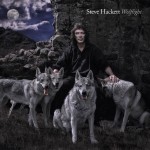 The former Genesis guitarist has gained a high profile with his Genesis revival show of late, but he’s also hit a late career purple patch with a string of excellent albums, of which this might be one of the finest. It’s a huge symphonic-sounding work, dominated by his distinctive liquid guitar playing and gorgeous harmony vocals. Just ignore the cover art with the embarrassed wolves and focus on the music.
The former Genesis guitarist has gained a high profile with his Genesis revival show of late, but he’s also hit a late career purple patch with a string of excellent albums, of which this might be one of the finest. It’s a huge symphonic-sounding work, dominated by his distinctive liquid guitar playing and gorgeous harmony vocals. Just ignore the cover art with the embarrassed wolves and focus on the music.